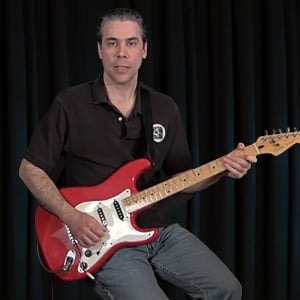Description
In this tutorial we'll learn a simple classical guitar style arrangement of the nursery rhyme "Mary Had A Little Lamb".
Lesson Info

Instructor
Christopher Schlegel
- Styles:
-
- Difficulty:
-
- Files
- Videos / Score
- Published
Contents
- 'Mary Had A Little Lamb': Introduction
- 'Mary' Melody Notes As Scale Degrees
- 'Mary' Harmonizing Measures 1-2
- 'Mary' Harmonizing Measures 3-4
- 'Mary' Harmonizing Measures 5-8
- 'Mary' Putting It All Together
- 'Mary' Experimenting With Bass Notes
- 'Mary' Making It More Musical
- 'Mary' Making A Two Voice Arrangement
- 'Mary' Making A Complete Arrangement
- Mary Had A Little Lamb: Performance Close View
- Mary Had A Little Lamb: Performance Wide View
